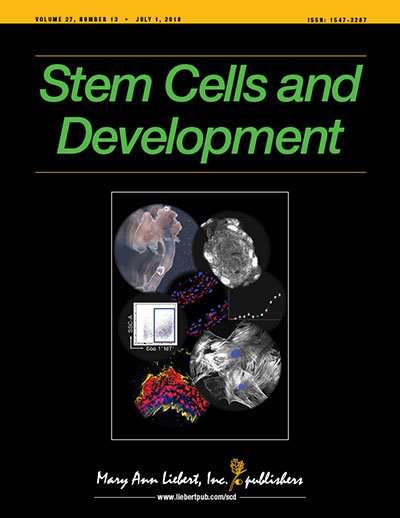Credit: Mary Ann Liebert, Inc., publishers
The promise of generating truly pluripotent stem cells from terminally differentiated adult cell types continues to captivate scientists who envision great potential for therapeutic interventions. The two primary methods involve either the replacement of oocyte nuclei with adult somatic cell nuclei—a process known as somatic cell nuclear transfer (SCNT)—or the introduction, typically by viruses, of a cocktail of specific transcription factors to create induced pluripotent stem cells (iPSCs). SCNT is more efficient and less variable but technically more demanding, and the availability of high-quality oocytes is limited. Thus, the potential to combine these approaches by identifying the crucial factors in oocytes that mediate SCNT efficiency is reviewed in a new article published in Stem Cells and Development.
In "Somatic Cell Reprogramming Informed by the Oocyte," Elena González-Muñoz, Ph.D., Andalusian Center for Nanomedicine and Biotechnology, Málaga, Spain, and Jose B. Cibelli, Ph.D., DVM, Michigan State University, categorically describe the known and potential oocyte-specific factors that can drive or assist somatic cell reprogramming by modulating the epigenetic landscape. They sort these factors into maternal histones and their chaperones, histone deacetylases and acetyltransferases, histone methylation modifiers, DNA methylation modifiers, transcription factors, miRNAs, and lncRNAs. Specific epigenetic modifications known to influence pluripotency are discussed along with their disruption by small molecules.
Collectively, the authors provide a logical framework for understanding how oocyte factors can de-differentiate committed cells and a platform for studying and discovering optimal combinations to increase the efficiency, reproducibility, and safety of this technique.
More information: Elena Gonzalez-Munoz et al, Somatic Cell Reprogramming Informed by the Oocyte, Stem Cells and Development (2018). DOI: 10.1089/scd.2018.0066
Journal information: Stem Cells and Development
Provided by Mary Ann Liebert, Inc





















